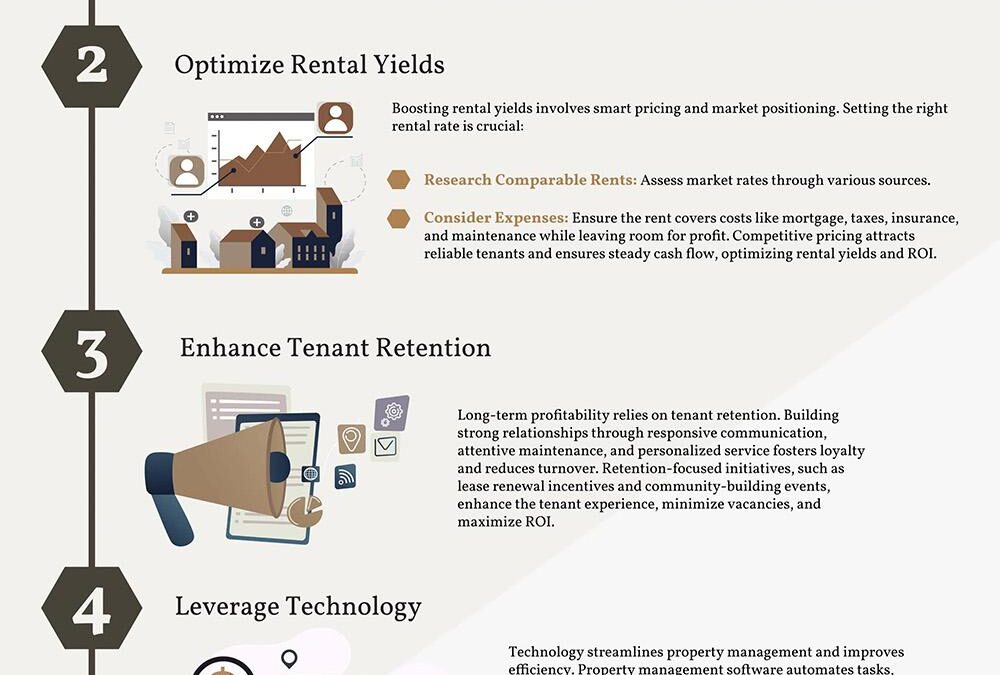In the dynamic landscape of real estate investment, the allure of building a rental property portfolio beckons both seasoned investors and newcomers alike.As the demand for rental housing continues to rise, so too dose the potential for wealth accumulation and financial freedom. Though, the journey toward creating a robust portfolio is marked by careful planning, strategic decision-making, and a deep understanding of the market. In this article, we will navigate the essential steps and strategies that pave the way for accomplished rental property investment. From identifying lucrative markets to managing properties effectively, we will provide a comprehensive recap designed to equip you with the knowledge needed to embark on or enhance your rental property journey. Whether you’re dreaming of securing your first investment or expanding your existing holdings,this guide offers a roadmap to help you cultivate a flourishing rental portfolio.
Understanding Your Investment Goals and Market Landscape
Every successful investment journey begins with a clear understanding of your objectives. Are you aiming for long-term wealth accumulation, steady cash flow, or perhaps a blend of both? Defining these **goals** will guide your decisions and help you articulate your rental property strategy. Factors to consider include:
- timeframe: Are you investing for immediate returns or building for the future?
- Risk tolerance: How much risk are you willing to take with your investment?
- Geographic focus: Which markets align with your goals and have growth potential?
Equally important is grasping the **market landscape** in which you plan to invest. Familiarity with local real estate trends, rental demands, and economic indicators will empower you to make informed decisions.To facilitate this analysis, consider evaluating:
| Market Indicator | Importance |
|---|---|
| Average rental prices | Determines potential cash flow |
| Occupancy rates | Indicates demand stability |
| Economic growth rates | Reflects future property value potential |

Identifying the Right Properties and Financing options
Choosing the right properties involves a careful analysis of both location and potential return on investment. Look for neighborhoods experiencing growth, whether through new businesses, improved infrastructure, or appealing amenities.Focus on properties that attract your target tenants, whether they are students, families, or professionals. Consider these key factors:
- Property Type: Single-family homes, multi-family units, or commercial spaces.
- Market Trends: Rental prices, vacancy rates, and demand.
- Future Potential: Upcoming developments or neighborhood improvements.
For financing, explore various options that could best suit your financial strategy. Traditional loans, hard money loans, or even partnerships can offer different advantages depending on your situation. Evaluate these financing avenues:
| Financing Option | Pros | Cons |
|---|---|---|
| Traditional Loans | Lower interest rates, stable payments | Long approval process, strict qualifications |
| Hard Money Loans | Rapid funding, less stringent requirements | Higher interest rates, short-term |
| Partnerships | shared risk, combined resources | Possible conflicts, profit sharing |

Implementing Effective Management Practices for Long-Term Success
Building a successful rental property portfolio hinges on employing effective management practices that promote long-term sustainability and growth. one such strategy involves **establishing clear communication channels** with tenants. Regular check-ins can prevent minor issues from escalating and foster a positive landlord-tenant relationship. additionally, **utilizing technology** for property management, such as online payment systems and digital maintenance requests, simplifies operations and enhances tenant satisfaction.
Furthermore,**regularly reviewing your property’s performance** is essential to ensure it meets market demands and investment goals. This can include tracking rental income, conducting market analysis, and making adjustments based on tenant feedback. Implementing a **comprehensive maintenance plan** is also crucial. This encompasses scheduling routine inspections and addressing repairs promptly, which can prevent costly emergencies in the future. By adopting these best management practices, property owners can not only safeguard their investments but also cultivate a thriving rental business.

Strategies for Growth and Diversification in Your Portfolio
Investing in rental properties can be a rewarding strategy for accumulating wealth and diversifying your investment portfolio. To enhance growth, consider leveraging different property types, such as single-family homes, multi-family units, or commercial real estate. Each category comes with its own risk and reward profile,so you can tailor your investments to match your risk tolerance and income goals. **Maximize your cash flow** by selecting properties in high-demand areas and opting for value-add opportunities, such as renovations that increase rental income potential. moreover, **engage in strategic partnerships** or join real estate investment groups, allowing you to collectively fund larger projects that may offer higher returns than you could achieve alone.
As your portfolio grows,regularly assess your investments to identify underperforming properties or emerging market trends. **Diversification is key**; consider branching out into different geographic areas or niche markets like vacation rentals, short-term leases, or even real estate crowdfunding. To keep track of your portfolio’s performance and to guide future investment decisions,use a simple table to summarize key metrics:
| Property Type | Location | Current Value | Monthly Rent | Vacancy Rate |
|---|---|---|---|---|
| Single-Family Home | Downtown | $350,000 | $2,000 | 5% |
| Multi-Family Unit | Uptown | $800,000 | $5,500 | 7% |
| Commercial Property | city Center | $1,200,000 | $10,000 | 10% |
In Retrospect
embarking on the journey to build a rental property portfolio is not just a venture into real estate; it’s a commitment to crafting a lasting income stream and creating lasting wealth. By following the steps and strategies outlined in this recap—ranging from diligent market research to strategic financing and property management—you equip yourself with the tools necessary to navigate the complexities of the rental property landscape. Remember, each property is not just an investment; it’s an possibility to foster community, support local growth, and secure your financial future. As you take your next steps, keep in mind that the path may be filled with challenges, but with persistence and a clear strategy, your portfolio can grow and thrive, reflecting your vision and dedication. Here’s to your successful journey in the world of rental properties—may your hard work pay off and your investments flourish!

